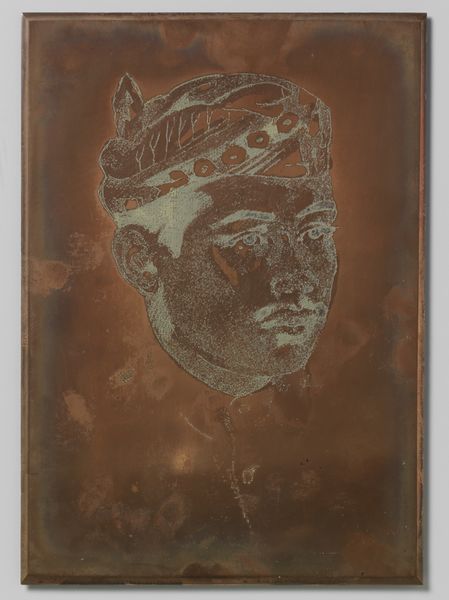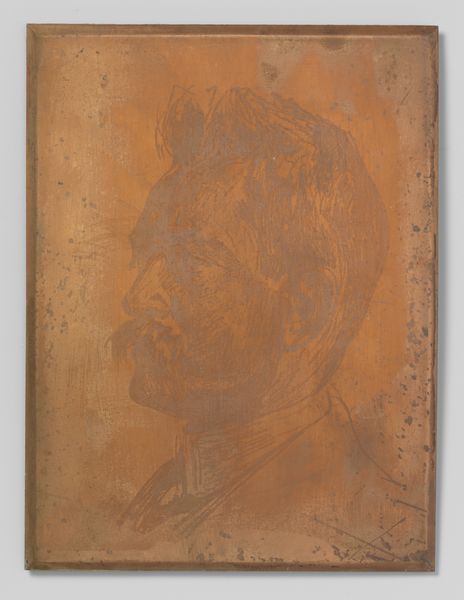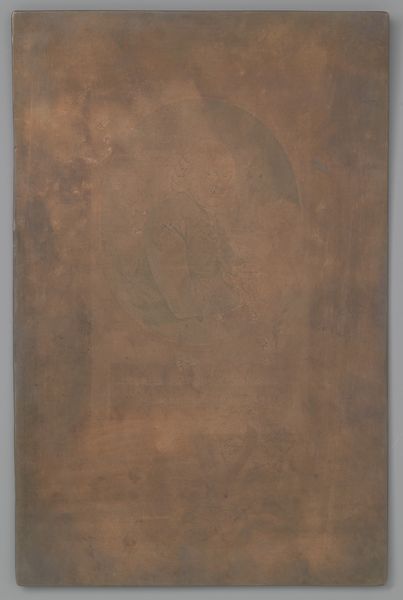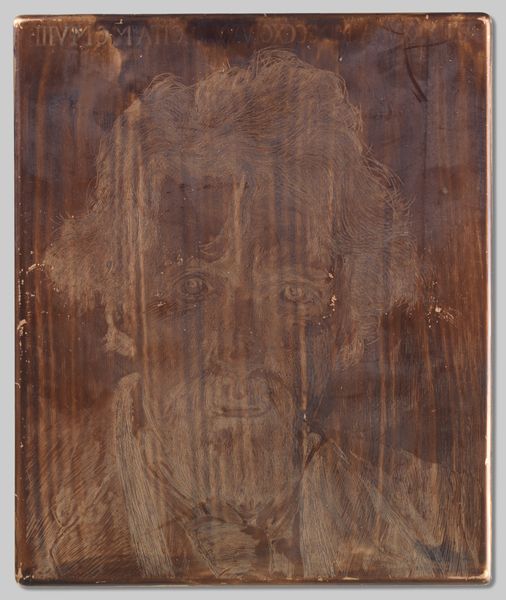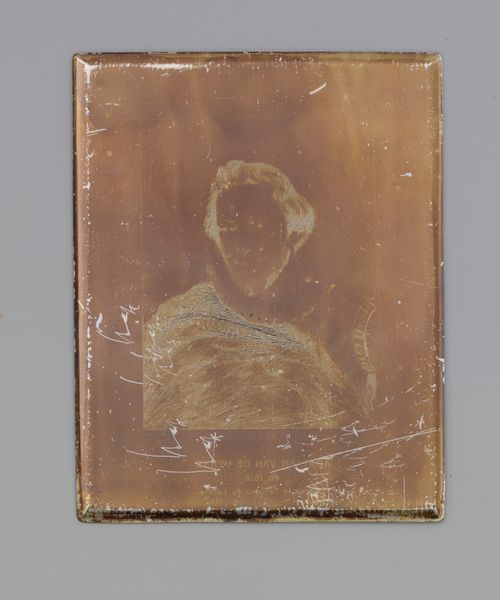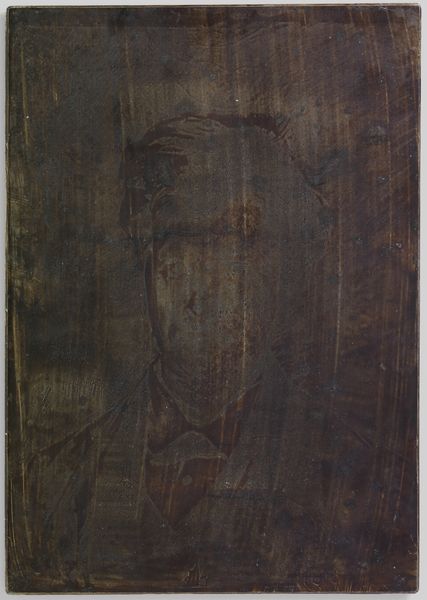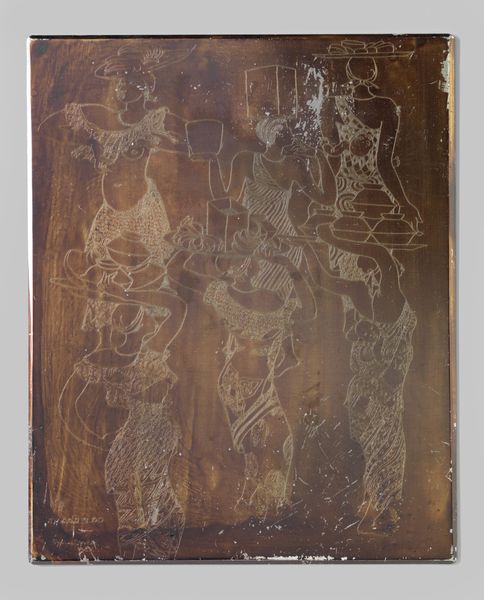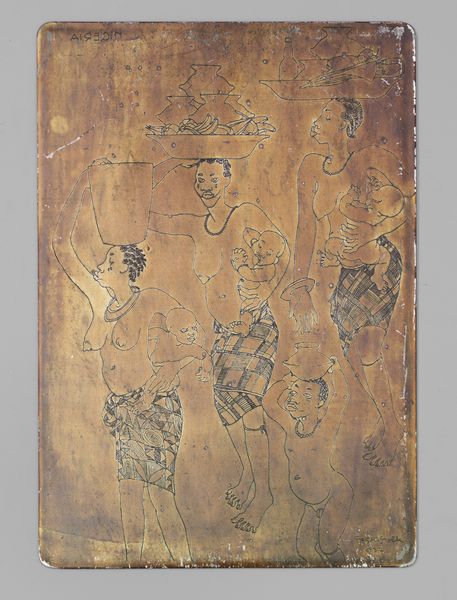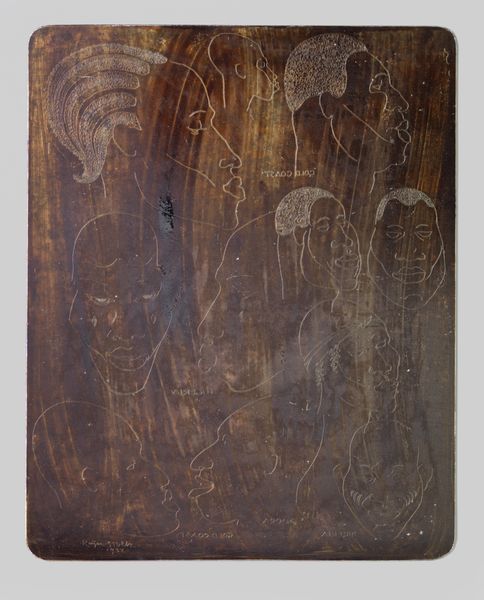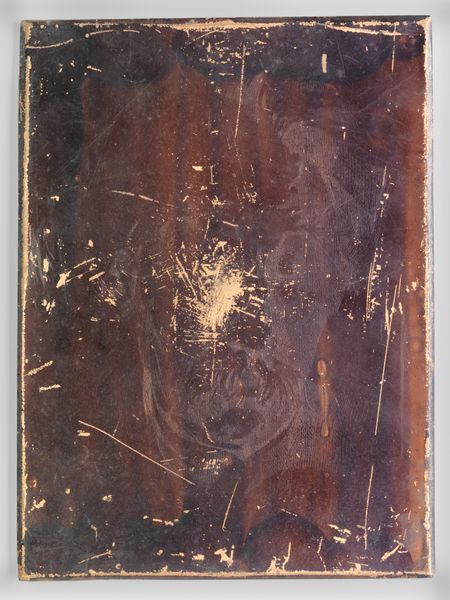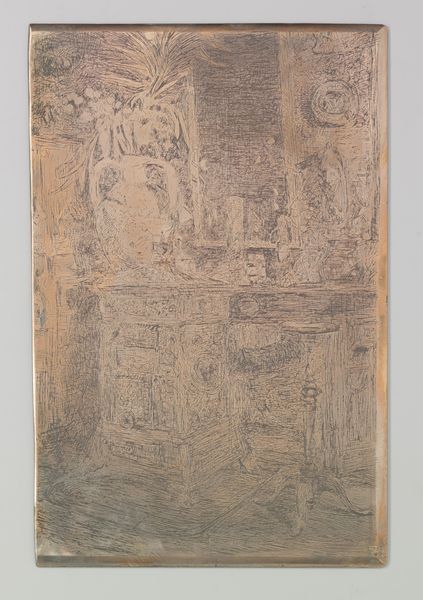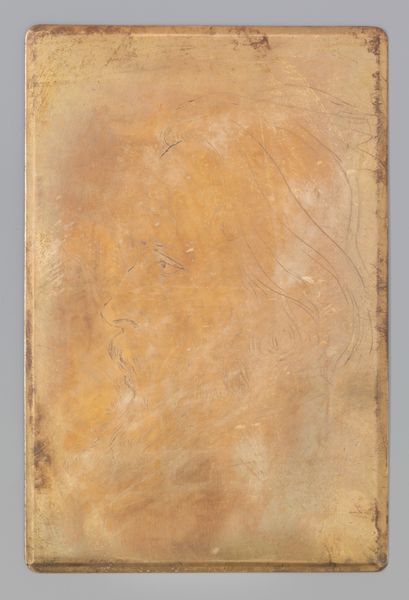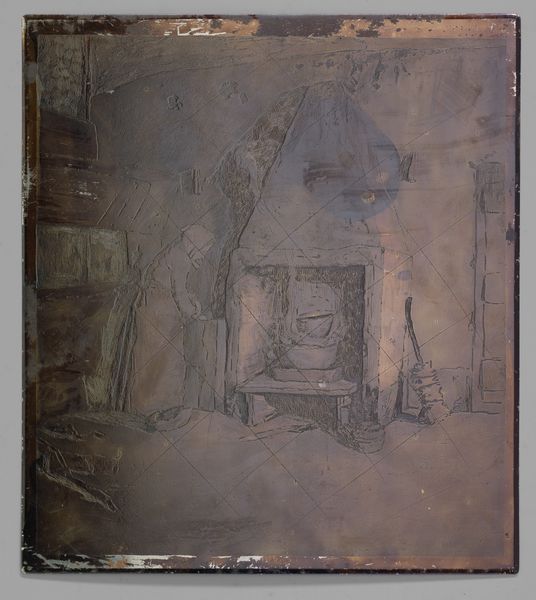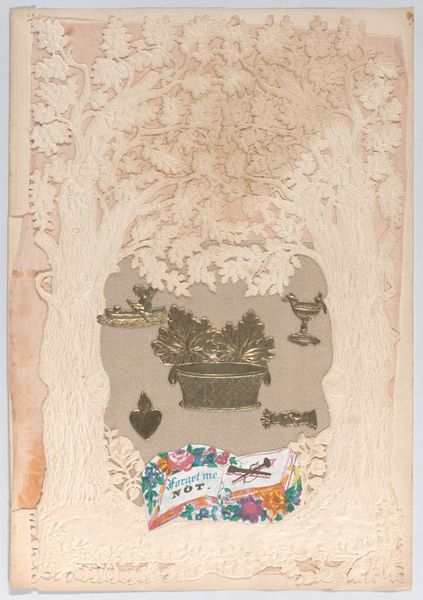
drawing, metal, etching, ink
#
portrait
#
drawing
#
water colours
#
metal
#
etching
#
asian-art
#
figuration
#
ink
#
coloured pencil
Dimensions: height 196 mm, width 142 mm
Copyright: Rijks Museum: Open Domain
Curator: We’re now looking at Willem Witsen’s "Portret van een Soendanese man," which translates to "Portrait of a Sundanese Man," created around 1921. It’s currently housed here at the Rijksmuseum. The work employs ink, watercolours and coloured pencil in an etching on metal. Editor: My goodness, it looks like something ancient unearthed from a dig! The colors—that coppery, earthy tone—make me think of old maps and forgotten stories. The lines are so faint, almost ghostly. Curator: Indeed. It's important to recognize the context of this portrait. Witsen's depiction reflects a colonial gaze that was prevalent at the time. His choice to portray a man from Sunda, a region in West Java, through the lens of European artistry demands that we address the power dynamics inherent in such representations. How does the artwork challenge or reinforce existing colonial narratives? Editor: Hmmm. It's interesting you mention the colonial lens. I get that. But beyond that, I wonder about the individual depicted. Who was this man? What were his dreams, his fears? The anonymity feels almost... violent, you know? The fragility of the etching adds to that sense of a fleeting encounter, a stolen image. It brings up all sorts of questions about representation and power. Is Witsen capturing or appropriating? Curator: Exactly. We have to also consider the artistic conventions of portraiture within the colonial period, where such works were often used to exoticize and otherize non-European subjects, contributing to the construction of racial and cultural hierarchies. Editor: It’s kind of spooky to imagine Witsen, an artist with certain preconceptions and intentions, setting down lines that would ripple out and carry his view across a century to us. It definitely makes me reconsider the way I look at older portraiture in general. I keep coming back to the man’s eyes. Curator: That personal engagement, balanced with critical awareness, is key. Considering this piece through the intersecting lenses of postcolonial theory and visual studies enriches our understanding. It reminds us that art doesn’t exist in a vacuum but reflects and shapes social and political realities. Editor: It does that for sure! It also makes me want to research this particular man! Thanks for opening up a richer, thornier path of reflection about the work!
Comments
No comments
Be the first to comment and join the conversation on the ultimate creative platform.
